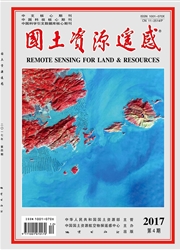

 中文摘要:
中文摘要:
小基线集InSAR( SBAS-InSAR)时序分析方法能够较好地克服InSAR时空失相干限制,抑制地形和大气影响,增加时间采样率,在监测地表形变随时间演化方面取得了较好的应用。为了有效监测山西省长治矿区地表形变,利用DInSAR方法监测开采矿区的快速大形变,得到形变区30 d的最大沉降量为11 cm;利用SBAS方法监测矿区边缘微小缓慢形变,得到2003年7月-2010年7月期间区内地面沉降的空间展布及时间序列相对形变量。对于矿区周围相干性保持较好的居民区,SBAS方法监测结果表明其整体形变表现为沉降趋势,沉降面积较大,沉降速率为5~15 mm/a,最大累计沉降为90 mm。矿区因开采时间、开采方式、采储量以及地形等因素的不同而呈现出不同的沉降结果。
 英文摘要:
英文摘要:
Small baseline subset( SBAS) algorithm has been widely applied to time series analysis for measuring surface deformation by overcoming InSAR limitations caused by temporal decorrelation, spatial decorrelation and atmospheric inhomogeneity. To monitor the ground deformation in Changzhi area effectively, the authors applied DInSAR method to study large deformation that happened in one month or even a shorter time in the mining area, and the maximum subsidence was 11cm during 30 days. Then the authors obtained the time series deformation results from July 2003 to July 2010 in Changzhi area by using SBAS algorithm, and made time series analysis of the residential area with large deformation rate which kept high coherence around the mining area by SBAS monitoring results. From the deformation maps, the authors found that subsidence was obvious in the study area, and the subsidence rate was 5~15mm/a, with the maximum accumulated subsidence being 90 mm. Different ore districts presented different deformation results due to their differences in such factors as production time, production way, reserves and topography.
 同期刊论文项目
同期刊论文项目
 同项目期刊论文
同项目期刊论文
 Measurement ofsubsidence in the yangbajing geothermal fields, tibet, from terrasar-x insartime serie
Measurement ofsubsidence in the yangbajing geothermal fields, tibet, from terrasar-x insartime serie 期刊信息
期刊信息
